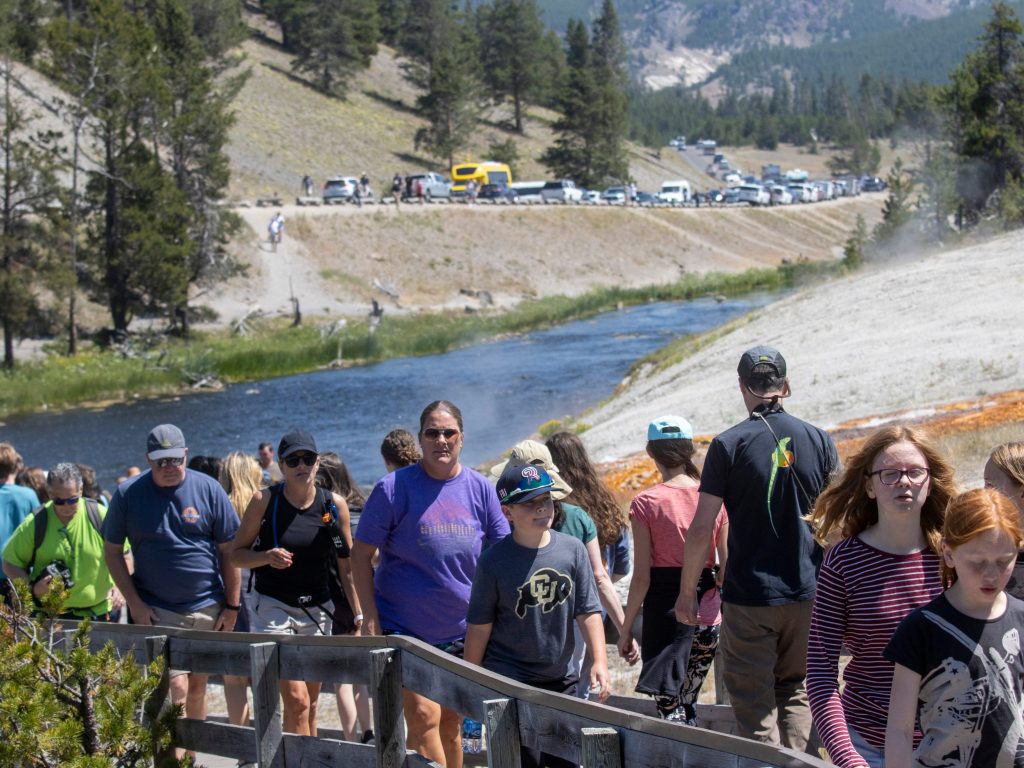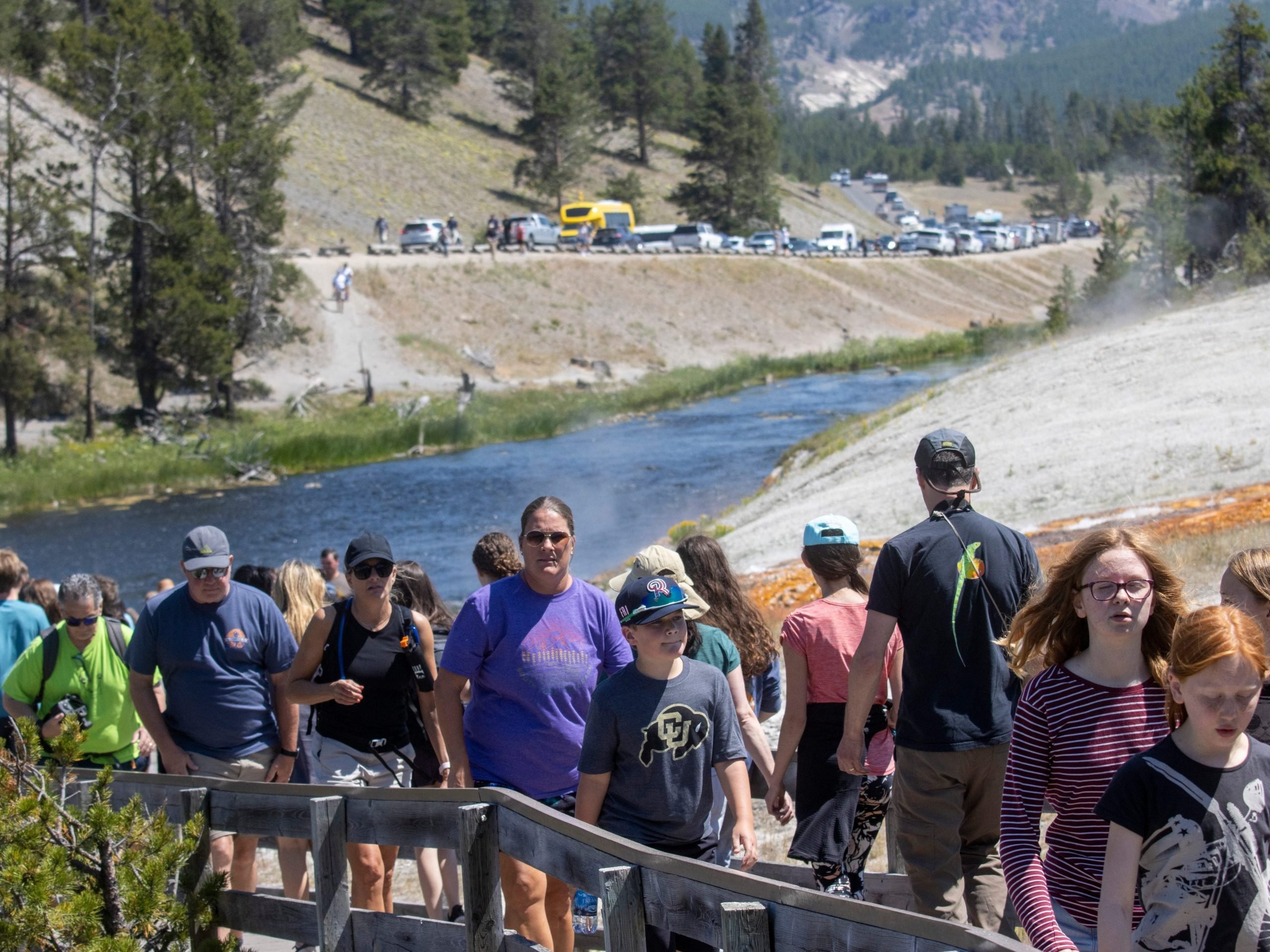
Natalie Behring/Getty Images
- After a year indoors, people are swarming America's national parks this summer.
- Parks are seeing long lines, traffic jams, graffiti, and negative encounters with wildlife.
- Park advocates give tips on how to enjoy a visit while staying safe and protecting the parks.
- Visit Insider's homepage for more stories.
After a year of being cooped up indoors, millions of Americans have fled outdoors to wild places, some for the first time.
Visitation rates at some of America's national parks have skyrocketed. Yellowstone National Park, one of the country's most visited, had a record-breaking June with nearly 1 million visits, a 20% increase from June 2019. At destinations like Zion National Park, visitors are waiting four hours just to begin a hike. At Arches and Canyonlands national parks, lines to enter can take hours and some cars are being turned away until other visitors leave.
"About 12-15 of the most popular destination parks is where we're seeing the most numbers of visitors," Jenny Anzelmo-Sarles, the chief spokesperson for the National Park Service, told Insider. "Half of all visits are happening at just over 20 of the most visited parks."
In addition to long lines and full parking lots, crowded parks are leading to damage to the natural landscape, negative encounters with wildlife, and an increase in search and rescue calls, according to Cassidy Jones, the outreach and engagement manager for the National Park Conservation Association.
"We're seeing lots of first-time visitors, lots of folks who have never 'parked' before," Jones said.
'Take only photos, leave only well-placed footprints'
Jones noted a common refrain within the park service: "Take only photos, leave only well-placed footprints."
Graffiti of any kind, whether drawing or etching into rock, is not allowed. Picking wildflowers or collecting rocks is not allowed. Even stacking rocks into cairns, or neatly stacked piles often seen on trails, is discouraged.
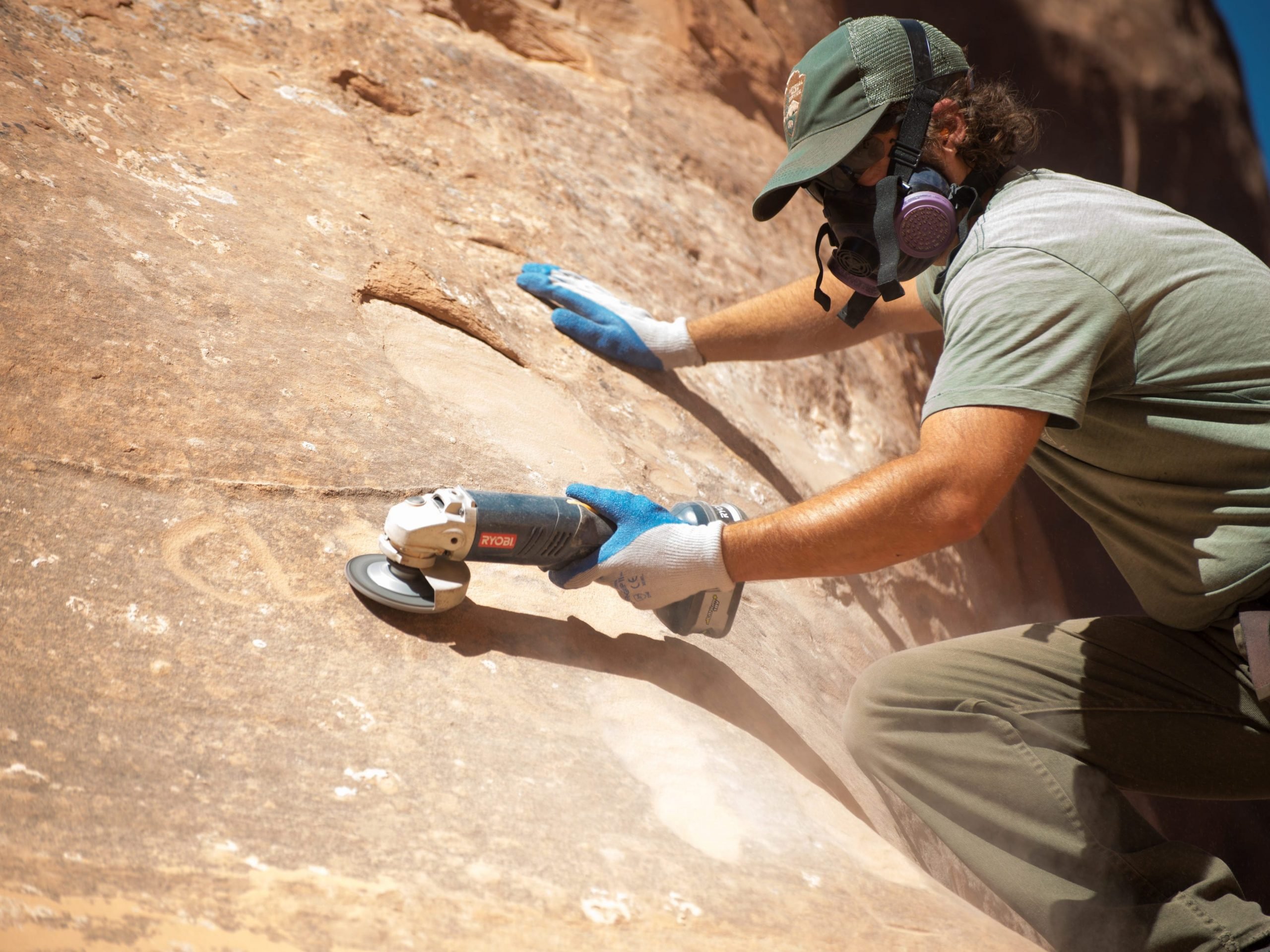
NPS/Chris Wonderly
While small actions like this may not seem like a big deal, Jones said the park service likes to say they're in the "forever business."
"Keeping these places as wonderful as they are now, or even better, forever, is a pretty big job," she explained. "While one wildflower doesn't seem like it makes a big difference, it does not take very long when you have thousands of visitors a day, each picking one flower, for there to be none left."
It's also important to not leave trash behind. Especially as the parks are crowded, visitors should not leave trash on top of already-full garbage cans, making it likely to blow away.
Never approach or touch wildlife and stick to the trails
Jones explained a basic rule: "If you extend your arm out and hold your thumb up you should be able to cover the animal with just your thumb." If your thumb can't cover the animal, you're too close.
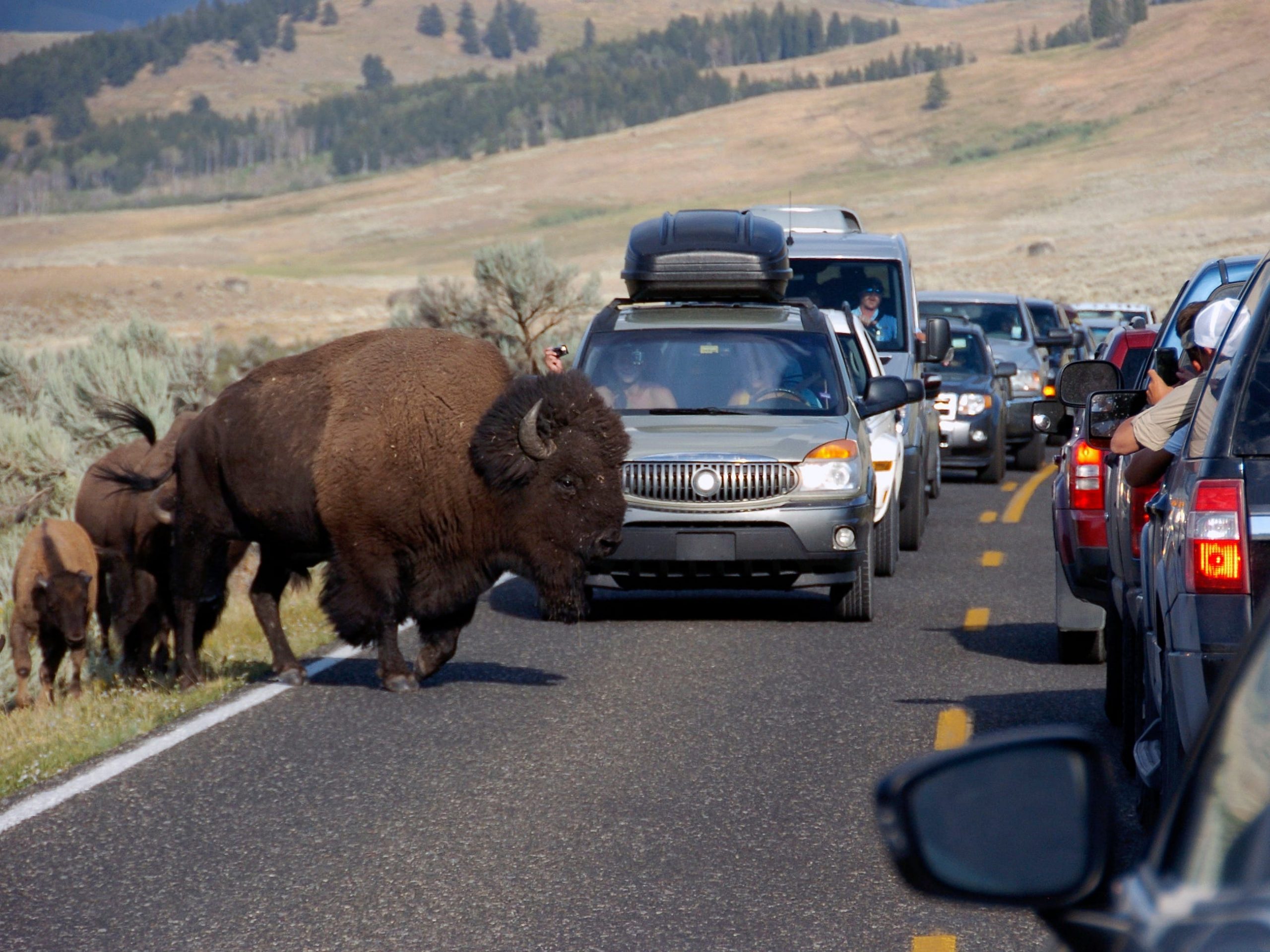
AP Photo/Matthew Brown, File
Getting close to animals puts people and the animal in danger, including animals that are not necessarily viewed as "dangerous." Yellowstone National Park has up to a few instances each year of visitors being gored by a bison after getting too close.
Jones said it's important to never feed animals as it teaches them to be dependent on humans and harass people for food. "They really don't need goldfish and gummy bears," she said.
Staying on trails also "gives wildlife the chance to escape people," Jones said. Walking off trails can also trample delicate soil and vegetation.
Plan ahead, manage expectations, and follow local recommendations
Some parks have introduced reservations systems, so visitors can ensure that they'll be allowed to enter at the time they reserve. If you can't reserve an entrance time in advance, Jones said most people try to enter parks between 10 a.m. and 2 p.m., so coming early or late is a good way to avoid a long line.
But if you show up to a park or to a specific trailhead and can't get in right away or can't find a parking spot, have a backup plan to visit another attraction nearby and return to the busy one another time.
Making hotel and campground reservations far in advance is also crucial, as they can fill up far in advance. NPS said campground reservations alone are up 73% since 2019.
Jones said first-time visitors especially should manage their expectations when it comes to crowds, and not expect to see the seemingly isolated views that are often depicted on Instagram.
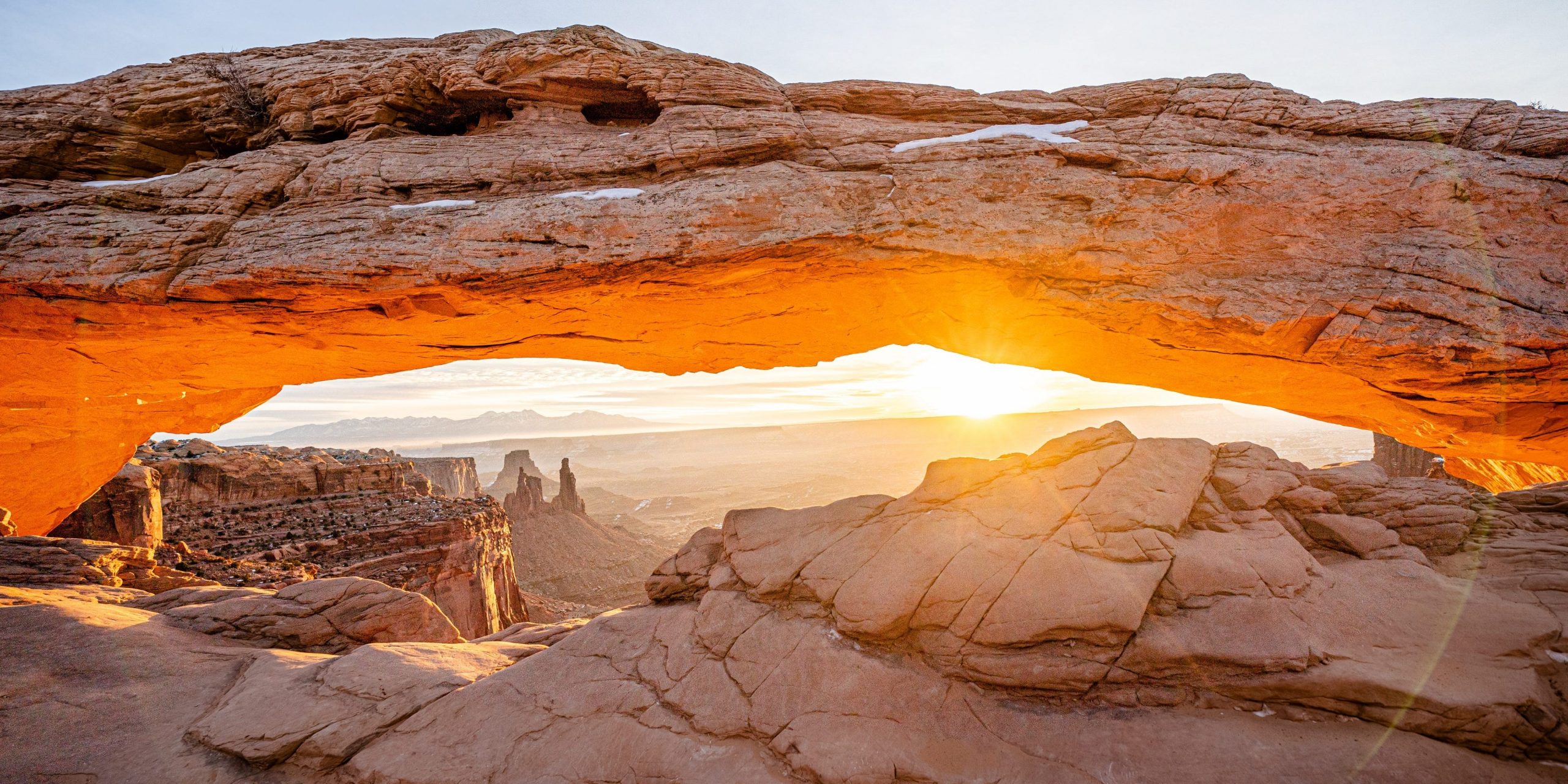
Josh Brasted/Getty Images
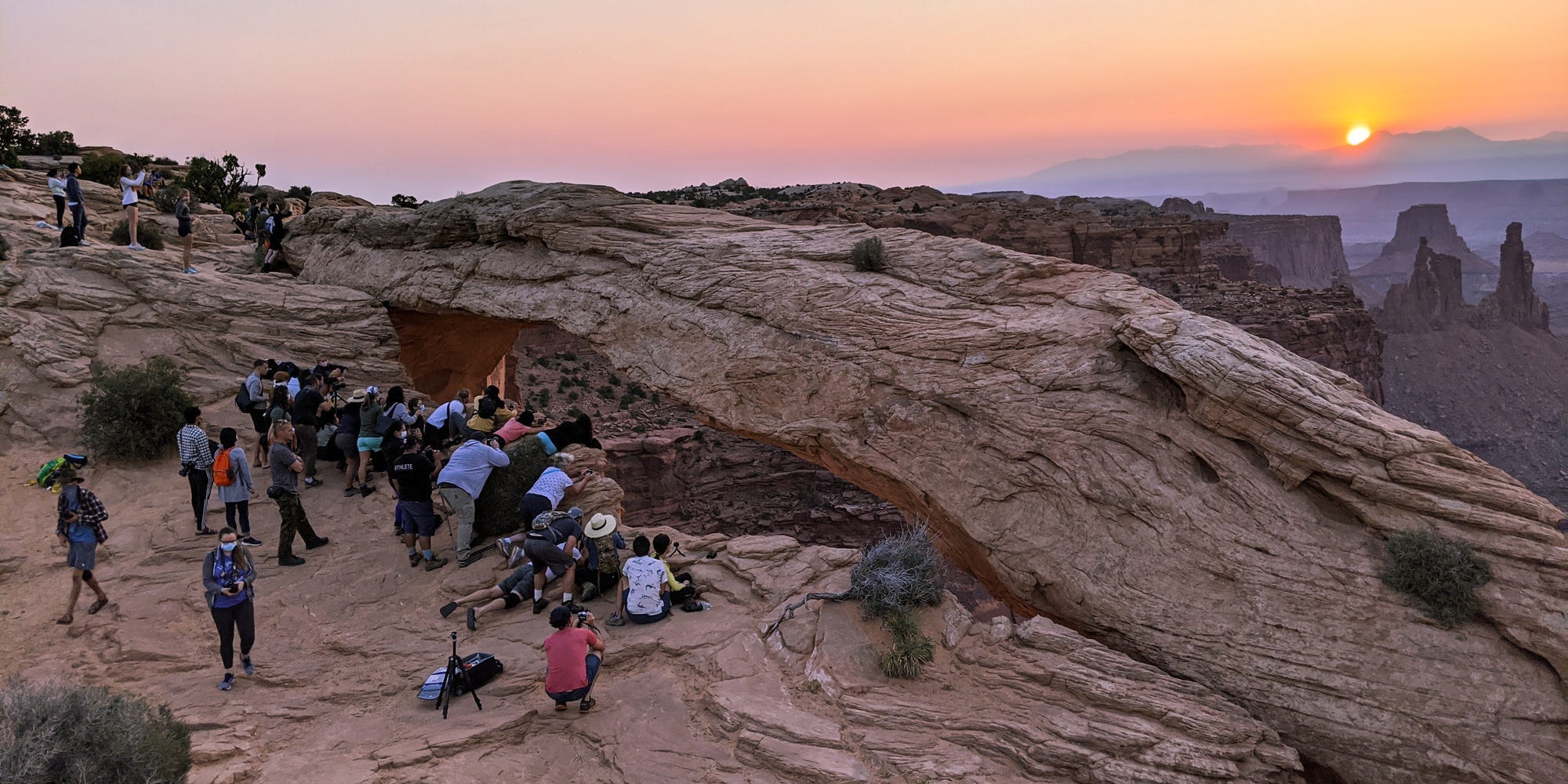
NPS/Jennifer Anderson
Most importantly for safety, Jones said people should follow the specific recommendations at the park they're visiting, as they'll vary based on weather, wildlife, and other factors.
"We're seeing a lot of search and rescue operations," she said. "You don't want to add to that burden."
The park service launched the "Plan Like a Park Ranger" initiative this year to help visitors plan ahead. As for avoiding the busiest parks, the NPS also recommends alternative locations to visit.
"I always like to remind folks that there are so many wonderful places to visit. Most people focus on the 'capital N, capitol P' parks," Jones said. There are only 63 "National Parks," but the NPS oversees a total of 423 protected places that include national seashores, national lakeshores, and national monuments, among others.
"All of them have extraordinary reasons for being protected, and I highly recommend folks really broaden their perspective," she said.
Have a news tip? Contact this reporter at [email protected].

